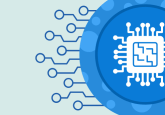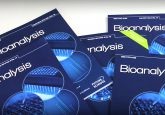Is computer-aided design the future of lab-on-a-chip production?
Research into computer-aided design of microfluidic chips shows promise for expanding the capabilities of lab-on-a-chip systems.
Researchers from the Department of Electrical and Computer Engineering at Michigan Technological University (MI, USA) have recently published work on the use of computer-aided design for the manufacture of microfluidic chips; offering various advantages over traditional manual design. The research may have implications for future manufacture of ‘lab-on-a-chip’ (LOC) systems.
Digital design of LOC systems allows more complexity to be included in the design – thus allowing more tests to be carried out per chip, in addition to higher detection accuracy. There are however challenges faced when using computer-aided design – including variation between chips, contamination and defects. In their work, the team attempt to address these issues.
The group’s research is published in a recent issue of IEEE Transactions on Nanobiosciences and describes the ‘physical-level synthesis’ of the chips, including placement (i.e., physical location and start time of each operation) and routing (i.e., transporting each droplet from source to chip). They have developed software that simultaneously assesses each of the issues currently experienced when using computer-aided design.
After simulating use of this software, the team demonstrate that their technique uses no defective or contaminated grids (compared to 17% on average without use of their software). In addition, their technique in routing awareness increased average routing yield by 51.2%. Lastly, the team explain that their technique, including routing variation awareness, only takes 3.5% longer than the traditional technique.
The scientists outline the advantages of manufacturing LOCs by computer-aided design, as opposed to manual design, explaining that higher complexity of the LOC would allow analysis of various metabolites on one chip – thereby offering improvements to this process.
Source: Liao C, Hu S. Physical-level synthesis for digital lab-on-a-chip considering variation, contamination, and defect. IEEE Trans. Nanobioscience 13(1), 3–11 (2014).






